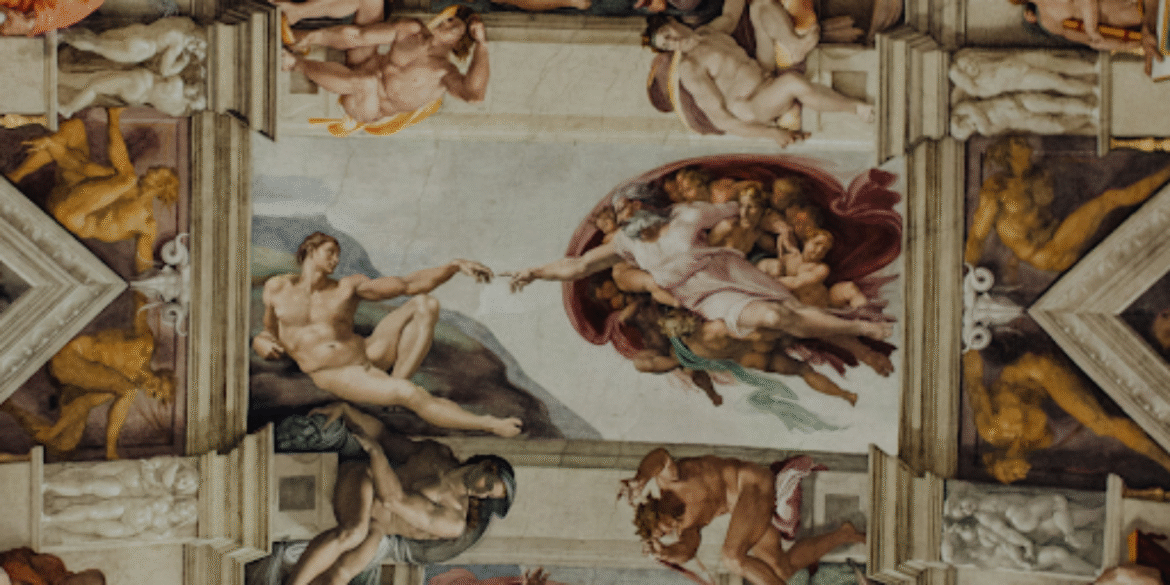Thomas A. Walters, an accomplished artist, art historian, and professor of Art History and Studio Art, has released his latest scholarly work, Michelangelo and the Apocalypse: The End Time Codes Revealed. This publication offers an interdisciplinary and multidisciplinary examination of Michelangelo’s Sistine Chapel frescoes, uncovering significant thematic and structural connections with the biblical Book of Revelation. Walters’ extensive academic background, including degrees in Art Education and ongoing doctoral studies in Comparative Arts, supports a nuanced analysis that bridges Renaissance art and eschatological literature.
Michelangelo and the Apocalypse explores the Sistine Chapel ceiling frescoes through the lens of apocalyptic symbolism. Walters presents a detailed interpretation that highlights parallels between Michelangelo’s visual narrative and the prophetic themes of judgment, salvation, and cosmic conflict found in Revelation. This innovative approach challenges traditional art historical perspectives by integrating theological and literary frameworks, offering fresh insight into the meaning and purpose behind one of the Renaissance’s most iconic artistic achievements.
Walters employs a cross-disciplinary methodology, combining art history, theology, and literary criticism to reveal how Michelangelo’s frescoes may serve as a visual counterpart to the eschatological messages of Revelation. This approach invites readers from diverse fields, including Renaissance scholarship, religious studies, and art history, to reconsider the Sistine Chapel frescoes within a broader spiritual and symbolic context. The work is intended for both academic audiences and general readers interested in religious art and prophecy.
Beyond the analysis of the frescoes themselves, Walters situates Michelangelo within his historical and cultural environment, examining the artist’s personal spirituality and the religious climate of Renaissance Italy. The book posits that Michelangelo’s art contains encoded references to apocalyptic themes, suggesting that the artist was not only a master of form but also a spiritual visionary who communicated complex theological ideas through his visual work. This interpretation offers a deeper understanding of Michelangelo’s creative process and the potential spiritual dialogues embedded in his masterpieces.
Published at a time of renewed interest in Renaissance art and eschatological themes, Michelangelo and the Apocalypse provides timely reflections on how these enduring subjects resonate with contemporary audiences. Walters addresses the ongoing fascination with end-time prophecy and its intersection with artistic expression, inviting readers to engage critically with both the historical and spiritual dimensions of Michelangelo’s work. The book balances scholarly rigor with accessible prose, aiming to make complex ideas approachable for a wide range of readers.
Thomas A. Walters brings to this publication a distinguished career as an art historian, educator, and ordained minister. His academic credentials include bachelor’s and master’s degrees in art education and doctoral studies in interdisciplinary comparative arts. Walters has taught at institutions across North America, including Montemorelos University in Mexico, Indiana University South Bend, Ohio University, and the International Academy of Design and Technology in Orlando. His previous publications include The Arts: A Comparative Approach to Painting, Sculpture, Architecture, Music, and Drama and Dynamic Biblical Counseling.
In addition to his scholarly work, Walters is an accomplished artist whose wood sculptures, paintings, drawings, and ceramics have been exhibited throughout the United States, Mexico, and Canada. Through his teaching and publications, Walters continues to foster interdisciplinary dialogue in the arts and humanities, inspiring a broad audience to explore the intersections between artistic creativity and spiritual inquiry.
For further information on Michelangelo and the Apocalypse: The End Time Codes Revealed, interested readers are encouraged to visit the authorized retailers.

